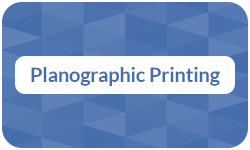
There are many ways to print an image or text on a piece of paper or any other medium. Today, besides creative processes, high-tech types of printers are the most used option when printing. This is why knowing about the many types of planographic printing can be important, whether it is for personal usage or as a professional printing service. This article will give you an overview of all types of planographic printing.
Inhaltsverzeichnis
Definition: Planographic printing
Planographic printing has its name from the fact that it is printed from a flat surface to a flat surface. This can be done in various ways, as it is the base of modern printers of almost every kind. The origin of planographic printing, however, is lithography.

Affordable document printing from AU$0.16
- Crisp text, vibrant colors & multiple paper choices
- No need to visit a shop; simply order online anytime
- Print documents, copies & reports with professional quality
Learn more!
Origin
The origin of planographic printing is lithography. It is a process that is based on the fact that oil and water will not mix with each other. The matrix is usually a limestone, which is then worked on with fat ink, etched with acid, and then again treated with fat ink to transfer lines onto the medium.
It was invented in 1796 by a German author named Alois Senefelder, who used it to print musical scores and the like. Later, it got popular for maps in small- and large-scale printing.
Types of planographic printing
Modern printers also almost always use planographic printing, since it is efficient and space-saving. There are a few different printmaking processes to transfer an image or text onto a piece of paper. Some of these processes require a new stencil for every new image, while others can print any image without requiring changes to the machine and its components.
Techniques like offset printing, stencil printing, and screen printing require individually manufactured stencils. This means that for each new image, a new printing plate is required, which also increases production costs. While stencil printing is often only used in art because it is simple but effective, the other two do have industrial advantages.
One time use
- Offset printing: Compared to normal printers, this process becomes cheaper the more copies you print. This is why offset printing works well for large volumes of flyers or brochures.
- Screen printing: The application of screen printing can be found in transferring thicker printing ink layers onto mediums other than paper, like fabrics, which is not as durable when done with a normal type of printer. Furthermore, it can also be used in print finishing to apply varnish, which cannot be printed.
Reusable
- Thermal printing uses heat on paper with heat-activated ink to draw out the image or text.
- Digital printing is an umbrella term for inkjet printing and laser printing.
- Inkjet printing transfers an image onto paper by using ink.
- Laser printing uses laser beams and toner to transfer a digital image onto paper.
- Sublimation printing can also be used to print on alternative media such as fabric by transferring the image via sublimation paper.
11×17 printing at BachelorPrint
- Large format print for posters, plans & presentations
- Fast turnaround & reliable delivery right to your door
- Brilliant color quality & details on premium paper from AU$0.23
Learn more!
FAQs
Planographic printing is a process where an image or text is printed from a flat surface to another flat surface. This type of printmaking stands in contrast to relief printing and intaglio printing, where the surface of the printing base is either elevated or lowered.
The oldest form of planographic printing is lithography, which uses the opposite characteristics of oil and water to print an image onto a sheet of paper. It was invented by Alois Senefelder in 1796 and was widely used for printing maps.
Reusable printing refers to the fact that there is no need to manufacture an entirely new stencil for every new image, but instead, many images can be transferred onto a medium one after another. These include thermal printing, digital printing, laser printing, inkjet printing, and sublimation printing.